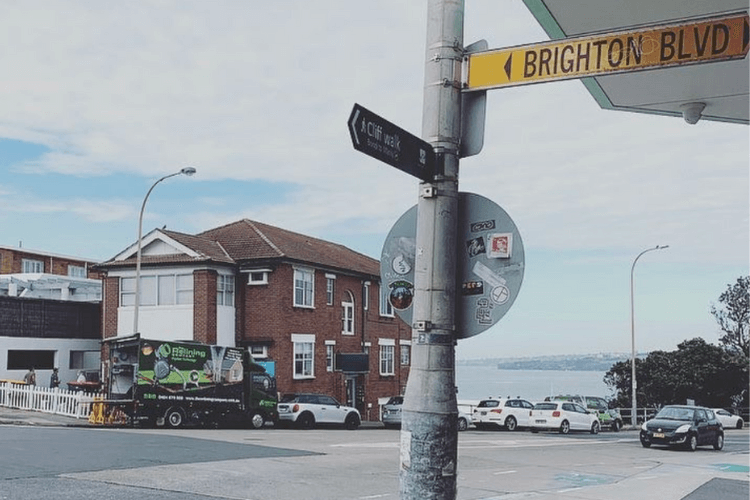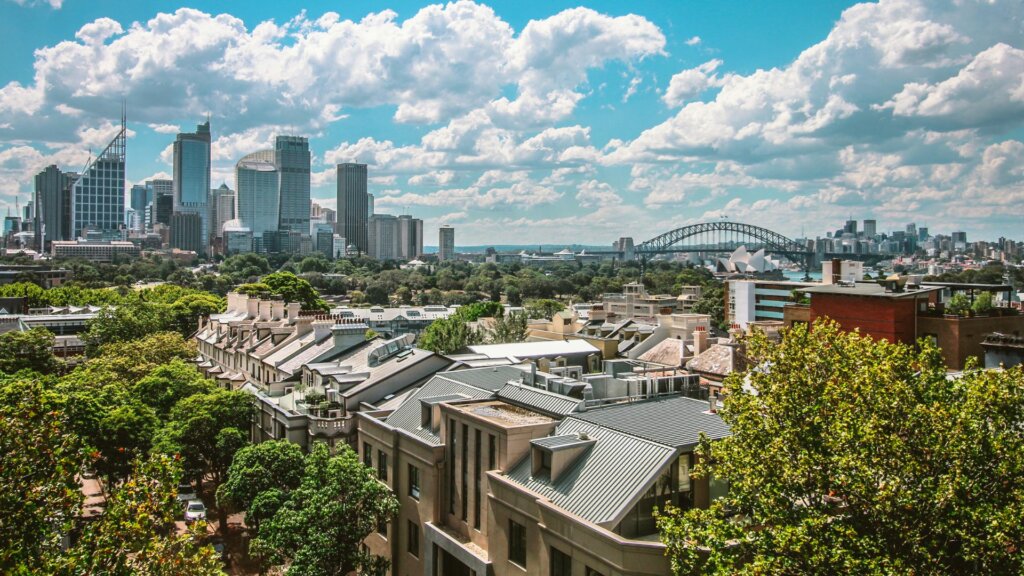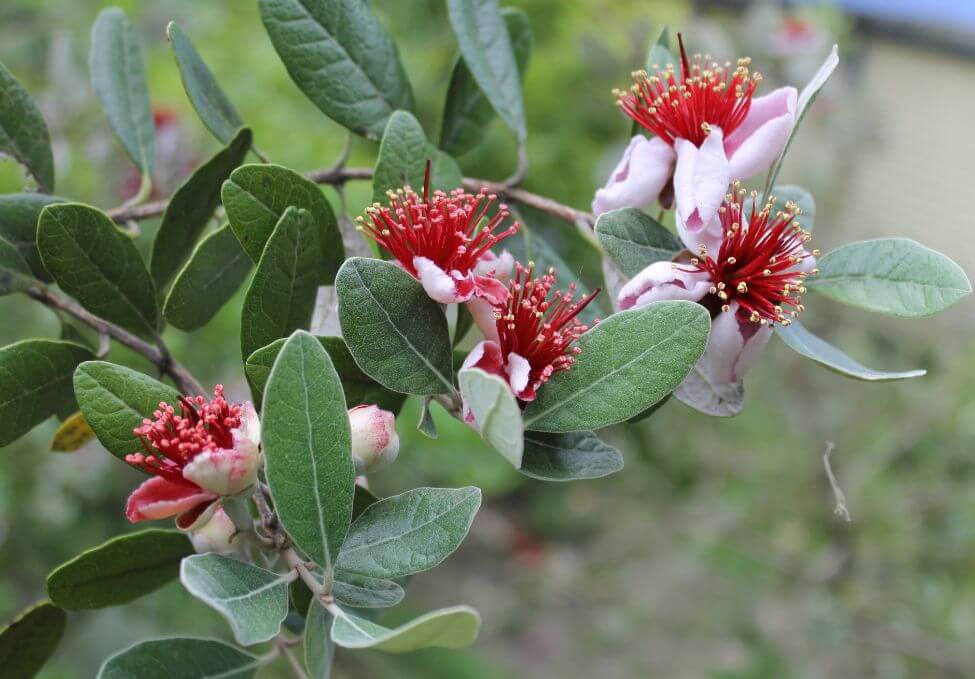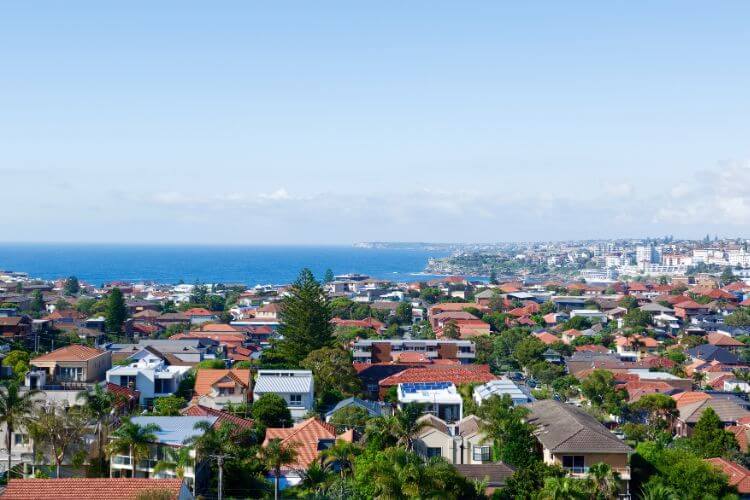Trees provide shade, improve air quality, boost the value of homes and beautify our surroundings. In Sydney, we’re lucky to have a significant number of trees in both our urban areas and beyond. But despite all of their benefits, trees come with hidden risks.
Underground, tree roots can spread up to 10 times their canopy radius as they seek out moisture and nutrients. The perfect place to find these things is in our plumbing systems, where they can crack and clog pipes until they are beyond repair.
Here we look at those suburbs of Sydney that are most at risk from tree root intrusion (and the results may surprise you). We also look at which plants to avoid and what to put in the ground instead, common signs of tree root damage, and ways to prevent this common plumbing problem.
Suburbs in Sydney with the Worst Tree Root Problems
Old infrastructure and microclimates that lead to the faster deterioration of plumbing are just some of the problems that Sydney homeowners face when it comes to keeping root systems away from pipes.
Inner West
Sydney’s Inner West, including suburbs like Newtown, Marrickville, and Petersham, has a lack of tree cover, at a density of just under 20%. However, this doesn’t mean homeowners don’t have problems with tree root intrusion. Far from it actually, because it’s harder for trees to find moisture and nutrients, so their root systems have to seek it out where they can. Older terracotta or clay pipes are particularly attractive to tree roots.
Eastern Suburbs

Randwick, Bondi Junction and other eastern suburbs are close to the beach. This humid, salty air can cause the premature corrosion of pipes and connections, giving weak points where invasive roots can enter.
North Shore
With its mix of sandy and clay soils, residents of suburbs like Wahroonga, Pymble, and Roseville can face many problems with blocked drains caused by tree roots in sewer pipes. Clay soil retains moisture, which attracts roots, while sandy soil offers poor support for pipes, which can make them more vulnerable to movement. When pipes move, it causes cracks or gaps through which tree roots can enter.
The Hills District
The Hills District and suburbs like Baulkham Hills and Castle Hill are known for their natural bushland. With so many large, established trees, tree roots are a common problem for many homeowners.
Mature trees have extensive root systems and large canopies that require a lot of moisture to stay healthy, and your pipes provide the moisture and nutrients these large, established trees require to thrive.
Northern Beaches
Strong winds, soil that dries out quickly and dense tree cover mean homeowners in Manly, Dee Why, and other Northern Beaches suburbs need to stay alert to the risks of roots entering pipes. Older infrastructure is more likely to have deteriorated, meaning a greater risk of plumbing problems.
Why Tree Roots Are a Problem for Sydney Homes
Roots from fast-growing trees and invasive species can do a lot of damage to underground infrastructure, including pipelines. Roots from some types of trees aren’t stopped by sturdy materials like concrete or root barriers. In fact, in Sydney’s hot climate, tree roots are attracted to slabs, retaining walls and any other sources of moisture, like stormwater pipes.
When pipes are old, they are prone to cracks and gaps through which tree roots can easily enter and grow, blocking sewer pipes and drains. Because it all happens underground where homeowners can’t see the problems, many people don’t realise they have an issue until they experience blocked drains or flooding.
This is why it’s important to watch out for the early signs of tree root damage and avoid planting large trees and certain species with invasive roots close to your own home or your neighbours.

Signs of Tree Root Damage to Watch For
There are some telltale signs that your pipes are beginning to clog or have been cracked, including:
- Slow drains
- Gurgling sounds
- Unpleasant odours
- Patches of lush grass in your lawn
- Sinkholes or depressions in lawns
- Cracks in foundations.
What You Can Do to Prevent or Fix It
If you live in an area with lots of tree cover, there’s no need to panic. With regular maintenance and the appropriate preventative measures, you can stop tree root intrusion from becoming a problem. Have a drain inspection conducted once every 12 months, plant trees from our list of suitable species below and consider removing trees that may cause problems.
The other thing you can do to prevent tree roots from messing with your plumbing is to have your pipes relined. Pipe relining makes your pipes more durable, sealing any cracks or gaps where tree roots may enter and cause further damage.
What are the Best & Worst Trees to Plant in Your Sydney Garden?
Camphor Laurel is one of the worst trees to plant in your New South Wales garden. An evergreen tree that grows up to 20m, it has an aggressive root system that can damage pipelines.
Most species of fig trees, such as Weeping Figs, Port Jackson Figs, and Moreton Bay Figs, are also unsuitable for the average suburban Australian yard because they have invasive root systems that will wreak havoc if planted within 25m of buildings or swimming pools.
Gum trees, particularly Eucalyptus trees, also have aggressive root systems that extend far beyond their canopy, causing damage to underground pipes, foundations and footpaths.
Willow trees are another common tree that doesn’t belong in urban areas due to their fast root growth. Their reach can extend up to 40m underground, blocking pipes as they search for water and nutrients.
Other common trees to avoid planting in your Sydney Garden even include some native species, so you should always check with local authorities before you plant. Don’t plant:
- Chinese Elm tree
- Jacaranda trees
- Evergreen Alder
- Illawarra Flame Tree
- Poplar trees
- Pride of Bolivia
- Coral trees
- Casuarina tree
- Golden Robinia
- Silver Maple
The best trees to plant in your Sydney garden

Drought-tolerant, locally indigenous native species should be your first choice if you’re looking for backyard or street trees that are well-suited to Sydney’s climate and won’t harm your plumbing. These include:
- Coast Myall
- Silver Banksia
- Black Wattle
- Coastal Banksia
- Lillipilli
- Callicoma.
Other native species include:
- Red Flowering Gum
- Weeping Bottlebrush
- Orange Flowered Grevillia
- Golden Penda
- Cabbage Tree Palm.
Exotic species that have slow root growth and won’t damage sewer lines or water pipes include:
- Japanese Maple (these are deciduous trees)
- Crepe Myrtle
- Feijoa Trees
- Dwarf Evergreen Magnolia.
Check with your local council to find a more comprehensive list of suitable trees specific to your area.
When to Call a Professional
There’s no need to panic about tree roots in your plumbing — just be proactive. If you’re in one of these high-risk Sydney suburbs, The Relining Company can put your mind at ease with a CCTV inspection.
Or why not give us a call to talk about how relining can help you protect your pipes from future problems.
If you have a blocked drain and suspect tree roots could be the problem, give us a call on 0488 885 166 for a non-invasive solution to tree root damage.
Frequently Asked Questions
Which trees have the most damaging roots?
Some of the most common trees with damaging roots include camphor laurel, fig trees and willow trees. We’ve listed more of the least suitable trees to grow in your Sydney yard above.
What trees have invasive roots in Australia?
It’s not just exotic species to Australia that have invasive roots. Even some Australian natives, like gum trees, aren’t suitable for planting close to homes and underground infrastructure.
Who is responsible for tree root damage in NSW?
If the tree is growing on your land, you are responsible for any damage caused by its roots, including to neighbouring properties.
Which tree should not be planted close to a house?
You shouldn’t plant trees that grow very tall close to your home, even if they don’t technically have invasive roots, and you should definitely avoid trees whose roots grow quickly or aggressively.
Back to Top